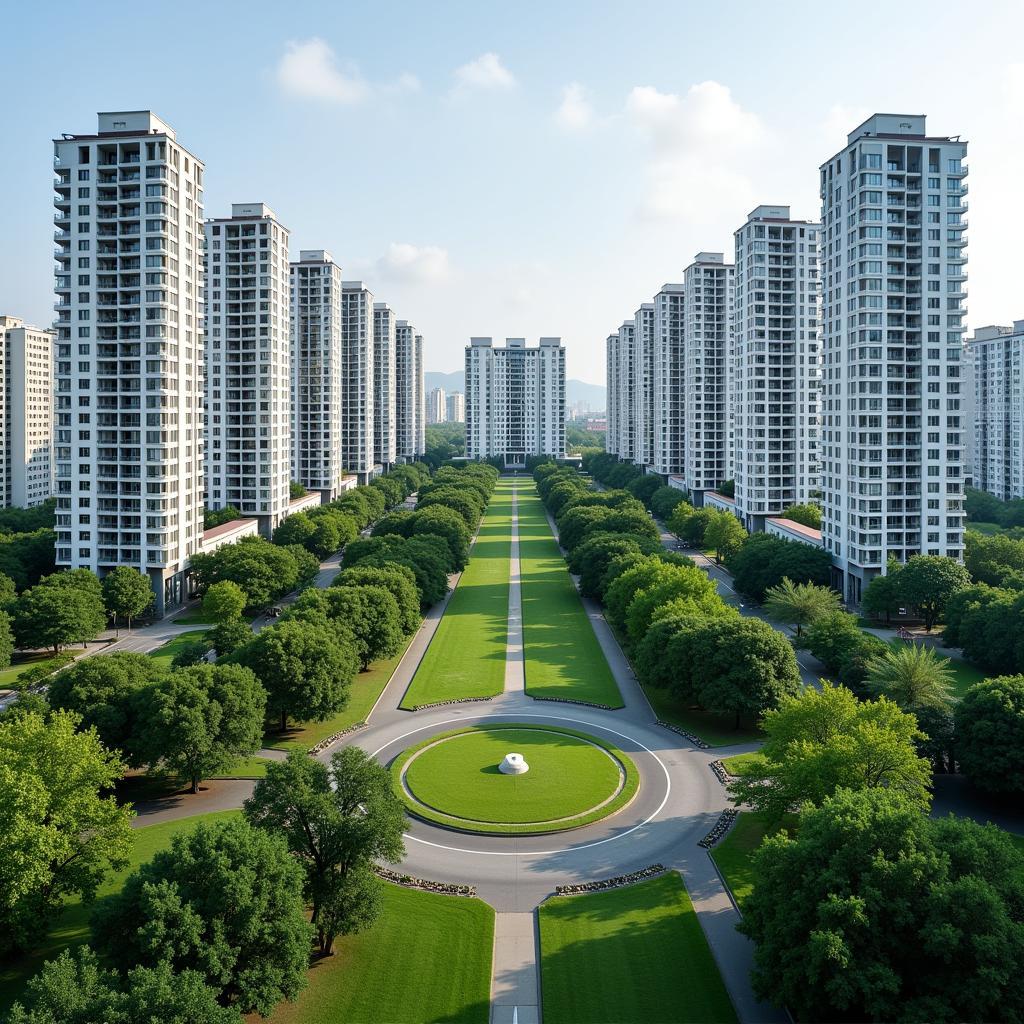Urban planning and quality of life is a recurring theme in IELTS Writing Task 2, appearing approximately 2-3 times annually. This topic’s frequency has increased by 15% in recent years, reflecting growing global concerns about urbanization and livability. Let’s examine some past questions and analyze high-scoring sample responses.
The impact of urban heat islands on city planning is increasingly relevant as cities expand, making this topic particularly important for IELTS candidates.
Selected Question for Analysis
Some people believe that urban planners should focus on reducing commute times by building more housing near city centers, even if it means replacing parks and green spaces. To what extent do you agree or disagree?
Question Analysis
This question addresses the balance between urban convenience and environmental preservation, requiring candidates to:
- Take a clear position
- Evaluate the trade-off between accessibility and green spaces
- Consider long-term implications for quality of life
- Provide relevant examples and solutions

Sample Essays
Band 8 Sample Essay
The debate between urban accessibility and environmental preservation represents a critical challenge in modern city planning. While reducing commute times through centralized housing development is important, I strongly disagree with sacrificing green spaces to achieve this goal.
First and foremost, role of parks and recreation in urban areas is crucial for maintaining public health and environmental balance. Parks serve as the “lungs” of cities, filtering air pollution and providing essential recreational spaces. For instance, Singapore’s successful integration of green spaces within its urban core has demonstrated that environmental preservation can coexist with efficient urban planning.
Furthermore, Invest in green infrastructure in urban areas? has shown that alternative solutions exist for reducing commute times without compromising green spaces. Cities can implement mixed-use developments, improve public transportation networks, and utilize brownfield sites for new housing developments.
In conclusion, while reducing commute times is important, sacrificing green spaces is not the answer. Urban planners should instead focus on innovative solutions that preserve environmental assets while improving city efficiency.
Word count: 275
Band 6.5 Sample Essay
I disagree with replacing parks with housing to reduce commute times because green spaces are very important for cities. This essay will explain my reasons.
The main reason is that parks help people stay healthy. When people live in cities, they need places to exercise and relax. For example, in my city, many people use parks for morning walks and evening activities. Without these spaces, people might become unhealthy.
Also, impact of urban living on health shows that cities with more green spaces have less pollution. Trees and plants clean the air and make cities cooler. If we remove parks, the city will become hotter and more polluted.
I think there are better ways to reduce commute times. Cities can improve buses and trains, or build houses in empty areas instead of parks. Many cities have old buildings or unused spaces that can be used for new houses.
In conclusion, we should not destroy parks to build houses. There are other solutions that can help both people and the environment.
Word count: 253
Score Analysis
Band 8 Essay
- Task Response: Clear position with well-developed arguments
- Coherence and Cohesion: Logical flow with effective paragraph transitions
- Lexical Resource: Sophisticated vocabulary with natural expression
- Grammatical Range: Complex structures used accurately
Band 6.5 Essay
- Task Response: Clear but simpler arguments
- Coherence and Cohesion: Basic organization with some linking
- Lexical Resource: Limited range of vocabulary
- Grammatical Range: Simple structures with some errors
Key Vocabulary
- Urban core (n) /ˈɜːbən kɔː/ – The central part of a city
- Brownfield sites (n) /ˈbraʊnfiːld saɪts/ – Previously developed land
- Mixed-use development (n) /mɪkst juːz dɪˈveləpmənt/ – Combined residential and commercial areas
- Environmental preservation (n) /ɪnˌvaɪrənˈmentl ˌprezəˈveɪʃn/ – Protection of natural spaces
- Urbanization (n) /ˌɜːbənaɪˈzeɪʃn/ – Growth of cities
Consider practicing with these similar topics:
- The role of technology in urban planning
- Balancing historical preservation with modern development
- Creating sustainable transportation systems
Share your practice essays in the comments for feedback and discussion!